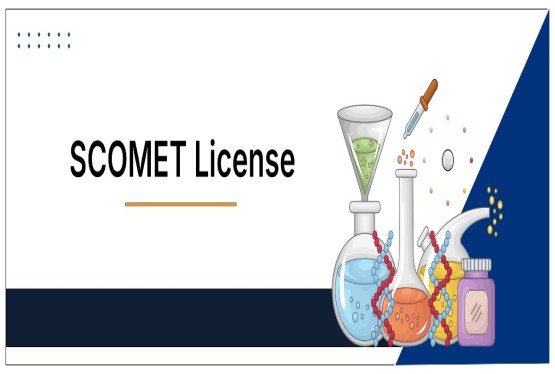The Micro, Small, and Medium Enterprises (MSME) sector is a crucial part of India's economy, contributing significantly to employment generation, industrial output, and exports. Recognizing its importance, Finance Minister Nirmala Sitharaman announced revised classification criteria for MSMEs in Budget 2025. This move is aimed at encouraging more enterprises to register as MSMEs, thereby facilitating access to financial and policy support.
Revised MSME Classification
One of the key highlights of the budget announcement was the revision of investment and turnover limits for MSME classification. The investment limits for micro, small, and medium enterprises have been increased by 2.5 times, while the turnover limits have been doubled.
The updated classification is as follows:
MSME Classification: Current vs. Revised
|
Category |
Current Investment Limit |
Revised Investment Limit |
Current Turnover Limit |
Revised Turnover Limit |
|
Micro Enterprise |
Up to Rs 1 crore |
Up to Rs 2.5 crore |
Up to Rs 5 crore |
Up to Rs 10 crore |
|
Small Enterprise |
Up to Rs 10 crore |
Up to Rs 25 crore |
Up to Rs 50 crore |
Up to Rs 100 crore |
|
Medium Enterprise |
Up to Rs 50 crore |
Up to Rs 125 crore |
Up to Rs 250 crore |
Up to Rs 500 crore |
This revision is expected to provide a significant boost to enterprises that were previously unable to qualify for MSME benefits due to their size.
Objectives Behind the New MSME Classification
The revised classification criteria aim to achieve multiple objectives:
1. Encourage Growth: By increasing the thresholds, more businesses can benefit from MSME incentives without fearing that scaling up will make them ineligible.
2. Job Creation: MSMEs contribute significantly to employment generation, and this move is expected to create more job opportunities for the youth.
3. Easier Access to Finance: MSME registration provides easier access to loans at lower interest rates, which is crucial for expansion and modernization.
4. Enhanced Market Opportunities: Many government tenders are reserved for MSMEs, and this classification expansion allows more businesses to participate.
5. Stronger Economic Contribution: With better financial backing, MSMEs can contribute more to GDP growth and industrial development.
Impact of the Revised Classification on MSMEs
The revision in MSME classification will have widespread implications for businesses, financial institutions, and the overall economy. Below are some of the key impacts:
1. More Businesses Eligible for MSME Benefits
The increased limits mean that businesses previously classified as large enterprises can now avail of MSME benefits. These include priority sector lending, government subsidies, and exemptions under various regulations.
2. Improved Financial Access
MSMEs often face challenges in securing credit. With higher investment and turnover limits, financial institutions may now extend more credit facilities to these businesses, fostering growth and innovation.
3. Boost to Manufacturing and Exports
Since MSMEs are integral to manufacturing and exports, this revised classification will provide them with the necessary support to compete in global markets. More businesses can now avail of government schemes designed to boost exports.
4. Encouragement for Startups and Entrepreneurs
With relaxed criteria, startups and new enterprises will find it easier to register as MSMEs and gain access to various incentives, including tax benefits and ease of doing business initiatives.
Government Support and Policy Enhancements for MSMEs
Along with the revised classification, the government has also introduced various initiatives to strengthen MSMEs, including:
• Subsidized Loans: Special financial schemes with lower interest rates.
• Technology Upgradation: Encouragement for MSMEs to adopt digital and technological advancements.
• Skill Development Programs: Training programs to enhance workforce efficiency.
• Market Linkage Support: Helping MSMEs connect with large enterprises and international markets.
Challenges and Considerations
While the revised classification brings multiple advantages, some challenges still need to be addressed:
1. Awareness and Implementation: Many businesses remain unaware of MSME benefits and classification changes.
2. Ease of Compliance: The process of registration and compliance needs to be simplified further.
3. Financial Literacy: MSMEs must be educated on financial planning, credit utilization, and investment opportunities.
4. Competition: With more businesses entering the MSME bracket, competition for government incentives and funding will increase.
Conclusion
The revised classification of MSMEs under Budget 2025 is a significant decision that will encourage more enterprises to formalize and register under this sector. By increasing investment and turnover limits, the government has provided a significant growth opportunity to small and medium businesses, fostering economic development, job creation, and financial inclusion. However, effective implementation and awareness will be key to ensuring that businesses fully benefit from these changes.
With this proactive approach, the MSME sector is poised to become a stronger pillar of India’s economic growth, making it more resilient and globally competitive.











































































_crop10_thumb.jpg)







_Rules,_2025_learn_crop10_thumb.jpg)




































